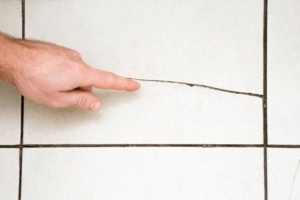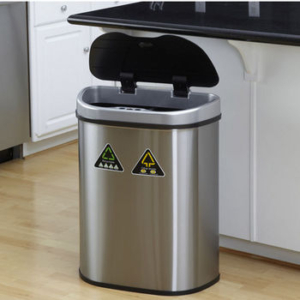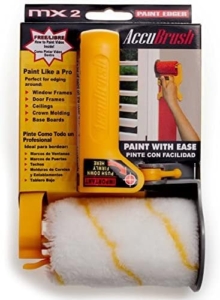Troubleshooting Tips: How to Fix a Running Toilet
A running toilet can be an irritating problem that not only wastes water but also disrupts your daily routine. The constant sound of running water and the prospect of a higher water bill can quickly become a headache. However, fear not! Fixing a running toilet is often a simple task that you can tackle on your own. In this blog post, we’ll guide you through the step-by-step process of troubleshooting and fixing a running toilet, so you can regain peace and save water.
Different Types of Toilets in Residential Homes
In residential homes, there are several types of toilets commonly found. Here are some of the different types:
1. Two-piece toilets: This is the most common type of toilet found in residential homes. It consists of a separate tank and bowl that are bolted together during installation.
2. One-piece toilets: As the name suggests, one-piece toilets are manufactured as a single, seamless unit without a separate tank and bowl. They offer a sleeker appearance and are generally easier to clean compared to two-piece toilets.
3. Wall-mounted toilets: Wall-mounted toilets are affixed to the bathroom wall, with the tank hidden behind the wall. They save space and make cleaning the floor beneath the toilet easier. However, their installation requires a specific wall-mounted carrier system.
4. Compact toilets: Compact toilets are designed for bathrooms with limited space, such as small powder rooms or half-baths. They have a smaller footprint, making them ideal for tight spaces while still providing efficient flushing capabilities.
5. Dual-flush toilets: Dual-flush toilets offer two flush options: a full flush for solid waste and a reduced flush for liquid waste. They are designed to conserve water by providing users with the choice of the appropriate flush depending on the type of waste.
6. Pressure-assisted toilets: Pressure-assisted toilets use compressed air or water to enhance the flushing power. They are often found in commercial settings, but some homeowners opt for them for their increased flushing efficiency and ability to clear waste effectively.
7. Eco-friendly toilets: These toilets are designed to minimize water usage, helping to conserve water and reduce environmental impact. They often feature innovative flushing mechanisms, low-flow technology, or dual-flush options.
8. Smart toilets: With advancing technology, smart toilets have gained popularity in residential homes. These toilets often feature heated seats, bidet functionality, automatic flushing, air dryers, and other automated features.
It’s important to note that availability and popularity of specific toilet types may vary depending on the region and individual preferences. When choosing a toilet for your home, consider factors such as water efficiency, ease of cleaning, and the overall aesthetic appeal that aligns with your needs and preferences.
Tools Needed to Fix a Running Toilet
To fix a running toilet, you’ll typically need the following tools:
1. Adjustable wrench: This tool is essential for loosening and tightening nuts and bolts, such as those securing the water supply line or the tank to the bowl.
2. Screwdriver: A screwdriver, both flat-head and Phillips-head, will be useful for removing screws that hold the tank lid or other components in place.
3. Pliers: Pliers can help you grip and hold various parts, such as the flapper chain or the fill valve nut, during repairs or adjustments.
4. Bucket: Have a bucket or container ready to catch any water that may spill when you disconnect the water supply line or remove the tank from the bowl.
5. Replacement parts: Depending on the specific issue, you may need replacement parts such as a new flapper, fill valve, or gaskets. Make sure you have the correct parts on hand before starting the repair.
6. Cleaning supplies: It’s a good idea to have cleaning supplies, such as a scrub brush or vinegar, available to clean any mineral deposits or buildup around the components or inside the tank.
7. Gloves and towels: Having gloves and towels handy can help protect your hands and keep the work area clean and dry.
8. Flashlight: A flashlight can be useful for better visibility inside the tank or in dimly lit areas.
While these are the commonly used tools, it’s important to note that the specific tools required may vary depending on your toilet’s make and model or the problem’s nature. It’s always a good idea to assess the situation beforehand to ensure you have the necessary tools and materials to complete the repair.
How to Fix a Running Toilet
1. Remove the tank lid:
To begin, carefully lift off the lid of the toilet tank and set it aside. This will allow you to access the inner components of the toilet and identify the source of the problem.
2. Check the flapper:
The flapper is a rubber valve located at the bottom of the tank, responsible for controlling the flow of water from the tank to the bowl. Inspect the flapper to ensure it is not damaged, misaligned, or worn out. If you notice any cracks or signs of wear, it’s time to replace the flapper with a new one, which can be easily found at your local hardware store.
3. Adjust the flapper chain:
Sometimes, the chain connecting the flapper to the flush handle may be too loose or tangled. This can prevent the flapper from closing properly after flushing, causing the toilet to run continuously. Adjust the chain so that it has a slight amount of slack, allowing the flapper to close fully and seal the tank.
4. Check the water level:
An excessively high water level in the tank can lead to continuous running as water overflows into the overflow tube. Adjust the float mechanism to lower the water level. Most toilets have a float arm or a water level adjustment screw that can be adjusted to control the water level. Experiment with the settings until the water level is below the overflow tube.
5. Inspect the fill valve:
The fill valve is responsible for refilling the tank with water after each flush. If the fill valve is faulty, it can cause water to continuously flow into the tank, leading to a running toilet. Examine the fill valve for any signs of damage or wear. If needed, replace the fill valve with a new one, readily available at hardware or home improvement stores.
6. Check for leaks:
Leaking can also contribute to a running toilet. Inspect the tank and bowl for any signs of water seepage. If you discover a leak, examine the gaskets and seals. Worn-out or damaged gaskets may need to be replaced to resolve the issue. A leaky toilet can waste significant amounts of water, so addressing it promptly is crucial.
7. Clean or replace the inlet valve:
Over time, the inlet valve (ballcock or refill valve) can become clogged with debris, hindering its proper functioning and causing a running toilet. Clean the valve by removing any accumulated sediment or mineral deposits. If cleaning doesn’t resolve the issue, consider replacing the valve with a new one to ensure optimal performance.
8. Test the toilet:
Once you’ve completed the necessary adjustments or repairs, it’s time to test your toilet. Flush it and observe if it stops running as it should. If the problem persists, double-check each step to ensure all components are correctly installed and aligned. Don’t hesitate to call a professional plumber if you need further assistance.
The Impact of a Toilet Continuously Running
A running toilet can have several negative impacts, including:
1. Water waste: A running toilet can waste a significant amount of water over time. According to the Environmental Protection Agency (EPA), a running toilet can waste hundreds of gallons of water per day. This wastage not only puts a strain on local water resources but also leads to increased water bills for homeowners.
2. Increased utility costs: A running toilet can significantly inflate your water bill. The constant flow of water, even at a slow rate, adds up over time and can result in higher monthly utility costs. Fixing the running toilet can help save money in the long run by preventing unnecessary water waste.
3. Environmental impact: Water is a precious natural resource, and wasting it has environmental consequences. Running toilets contribute to water scarcity and put strain on local water supplies, especially in areas prone to drought or with limited water resources. Conserving water by addressing a running toilet helps protect the environment and maintain a sustainable water supply.
4. Potential water damage: If a running toilet is left unattended, it can lead to water damage in the bathroom or adjacent areas. Continuous water flow can seep into flooring, walls, and subfloors, causing structural damage, mold growth, and costly repairs. Timely repair of a running toilet can prevent these issues from arising.
5. Disruption and annoyance: The constant sound of running water from a toilet can be disruptive and annoying, especially when trying to sleep or concentrate. It can affect the overall comfort and ambiance of your home, making it more difficult to relax and enjoy your living space.
6. Plumbing system strain: A running toilet can put additional strain on the plumbing system. The constant flow of water can impact other plumbing fixtures and may lead to premature wear and tear or potential leaks in the system.
Addressing a running toilet promptly not only helps conserve water and reduce utility costs but also prevents potential water damage and ensures the smooth functioning of your plumbing system. It’s advisable to fix a running toilet as soon as you notice the problem to mitigate these negative impacts.
Here are 10 frequently asked questions about fixing a running toilet along with their corresponding answers:
1. Q: Why is my toilet running?
A: A running toilet is often caused by a malfunctioning flapper, an improperly adjusted fill valve, a leak in the tank or bowl, or a problem with the float mechanism.
2. Q: How can I tell if my flapper is faulty?
A: A faulty flapper may have visible cracks, signs of wear, or it may not seal properly when closed.
3. Q: Can I repair a damaged flapper, or should I replace it?
A: It is recommended to replace a damaged flapper with a new one. Flappers are inexpensive and easy to install, ensuring a proper seal and preventing future issues.
4. Q: Why should I adjust the flapper chain?
A: Adjusting the flapper chain ensures that it has enough slack to allow the flapper to close fully and create a tight seal, preventing water from continuously flowing into the bowl.
5. Q: How do I adjust the water level in the tank?
A: Most toilets have a float arm or a water level adjustment screw. Lowering the float arm or turning the adjustment screw counterclockwise can decrease the water level in the tank.
6. Q: What if adjusting the water level doesn’t stop the running toilet?
A: If adjusting the water level doesn’t resolve the issue, the problem may lie with the fill valve. Inspect it for any damage or wear and consider replacing it if necessary.
7. Q: How do I check for leaks in the tank or bowl?
A: Look for any signs of water seepage around the base of the toilet, cracks in the tank, or water pooling on the floor. These are indications of a leak that should be addressed.
8. Q: Can I clean a clogged inlet valve, or should I replace it?
A: Cleaning the inlet valve is a good first step. Remove any sediment or mineral deposits that may be obstructing its proper functioning. If cleaning doesn’t help, consider replacing the valve.
9. Q: Is fixing a running toilet a DIY project, or should I call a plumber?
A: Fixing a running toilet is often a DIY project that can be easily accomplished with basic tools and some troubleshooting. However, if you’re unsure or uncomfortable, it’s wise to seek professional help.
10. Q: Why is it important to fix a running toilet promptly?
A: Fixing a running toilet is essential to conserve water and prevent inflated water bills. Additionally, addressing the issue promptly can prevent potential water damage and more costly repairs down the line.
Remember, if you encounter a complex issue or are unsure about any step, it’s always best to consult a professional plumber for assistance.
Summary: How to Fix A Running Toilet
Fixing a running toilet doesn’t have to be a daunting task. Following these step-by-step troubleshooting tips, you can identify and resolve the underlying issues causing your bathroom to run continuously. Remember, saving water is not only beneficial for the environment but also for your wallet. So, roll up your sleeves, grab your toolkit, and get your toilet back in tip-top shape in no time.









